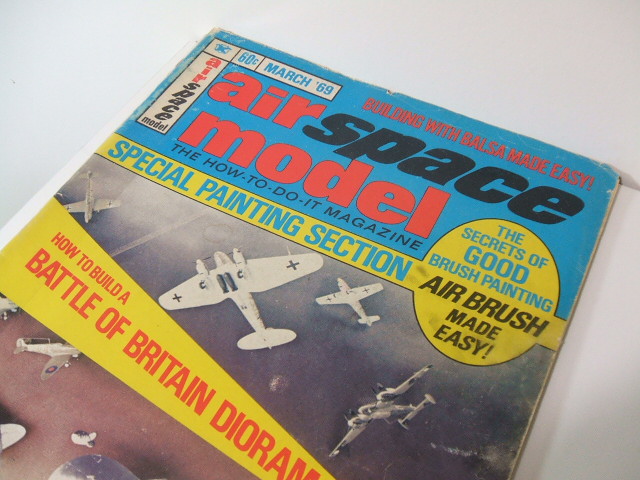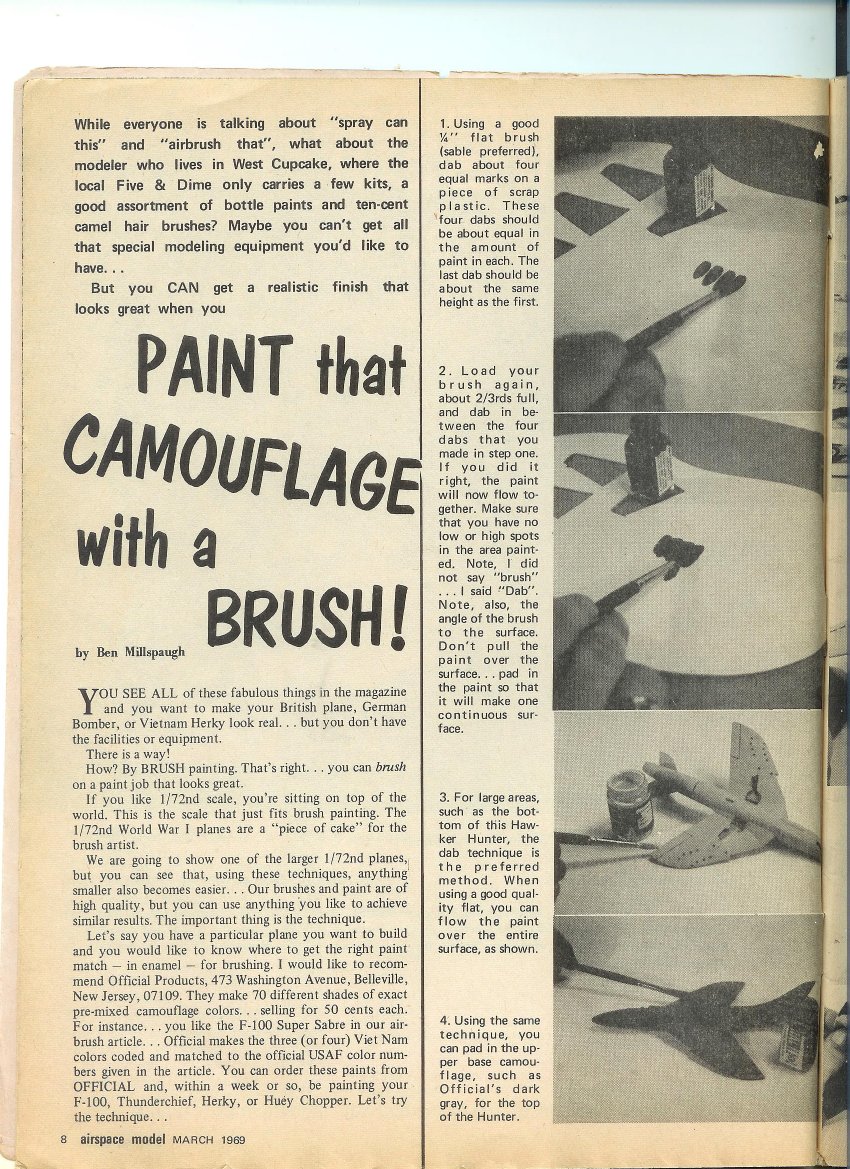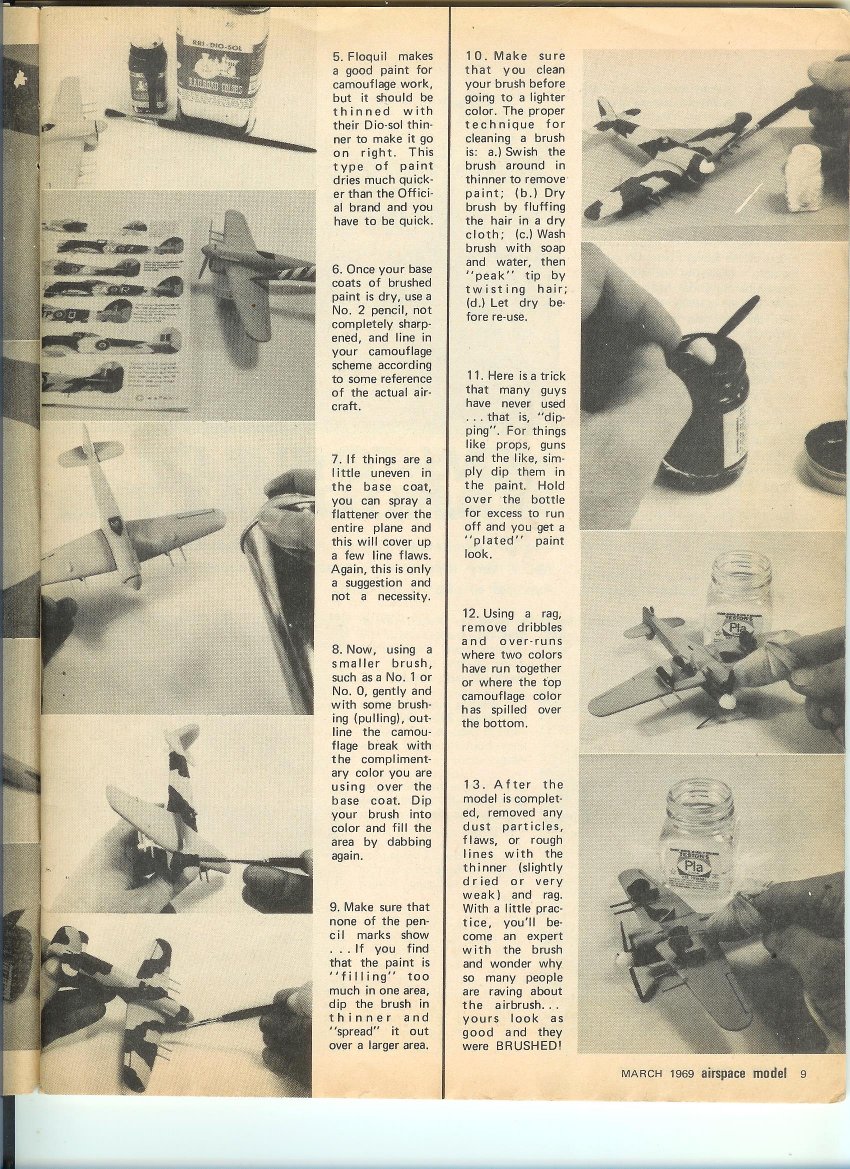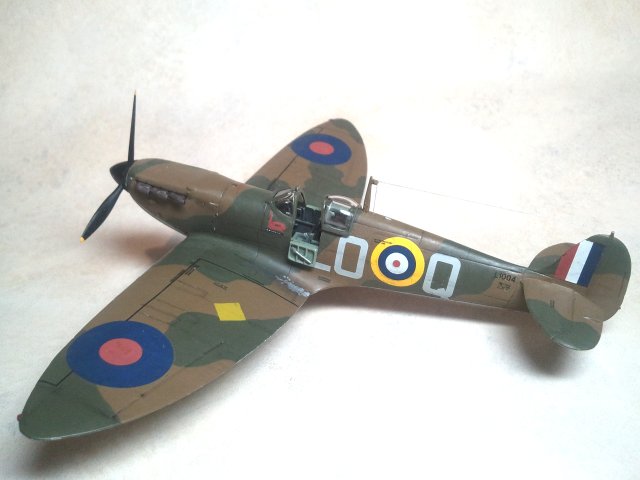
Air-Space Nostalgia
One of the things on my “to do” list for this blog is posting scans of old, old articles from my collection of old, old magazines. Some of them go back to the 1920’s, but today I’m reaching back to just the day before yesterday–1969. The magazine was entitled Air Space Model and it was just about the coolest thing I had ever seen (in 1969).

Sixty cents!
This article is about painting with a brush. It’s good.

Notice that the “1/4 inch” brush looks like it’s about a number 6 by my measure. It’s just barely small enough. I’d use a smaller one–but not a larger one for painting like this.

I think “Official” paints went out of business before the end of the sixties. Floquil is also gone (absorbed into the Testors black hole). But the basic idea here is a very good one, and works well with paints like Model Master Acryl or Revell Aqua Color.
One thing that’s a little questionable is the use of Dio-Sol thinner. My understanding was that this stuff was too “hot” for brushing on plastic– meaning it would dissolve the plastic. I’m a bit puzzled by this but Ben Millspaugh didn’t give bad advice so I’ll just remain puzzled. You can’t buy the stuff now, in it’s original form, anyway. That’s probably for the best.
My only real dispute with this article is that he paints one color over the other, deliberately. I try to avoid that (for good reason). But articles like this one from the dawn of time show us where present day old-timers like me get our ideas, and how long they have had to take root and grow into immovable objects.
They’ll be more of these articles posted here over time. To me, Air Space Model was a gold-mine of helpful hints. Most of them still stand today, as helpful as ever.
Good stuff, Maynard!
Just re-reading this, and I wish to ask; Why don’t you paint one colour over another? Is it to keep the proper hue? I have tried both, and while the colour slightly shifts, I don’t get any ridges (with decent paint like the Aqua and the MM Acryl anyway…). I am very curious why, and I cannot recall if you ever did explain this in detail.
Here’s a list of reasons:

1) Not painting one color over the other improves coverage
2) Not painting one color over the other eliminates the possibility of one color dissolving the other and causing a huge mess. This is not very likely with Polly Scale but with Tamiya it is inevitable.
3) Drawing the pattern multiple times is a good thing. I can make the pattern better with each attempt, improving it each time.
4) With three coats of dark earth and three of dark green, I’d get six coats of paint in the dark green areas. On this model, I actually ended up with about five coats of dark earth, because I had to correct the color. You’re going to start to notice eight coats of paint. Gonna look a might thick. Chunky.
5) Thin paint tends to run along engraved lines (such as the rudder, etc.) but if I paint each area seperately this problem is minimized. No paint running along the rudder seam or the aileron seam.
6) I don’t have to wait for the paint on the earlier coat to dry completely before I paint in the color next to it. I can paint, then immediately paint in the next color without worrying about how dry the first color may or may not be. I can just charge ahead. Since I alternate, first dark earth, then dark green, each coat will get plenty of time to dry before I add another coat, since it dries over the time that I’m painting the other color. This is a built in “control” that allows me to charge ahead impatiently while avoiding trouble.
Now those do make sense. The old thinned painted running down the seamlines and ailerons…haha, yes, I do occasionally get that. Overall very solid reasons. As I paint enamels as well, I am used to having to be patient, but sometimes it does get to me with the waiting times. and I confess, there have been times where I have had to paint more coats than I wanted of a base colour, and then seen a little too much ‘filling’ from the exta coats of camo over it.
One last thing to complete the curiosity here if yu have the time Dan; why don’t you follow the ‘paint the lighter underside first’ rule?
There is no reason to paint the underside first, because the lighter color will cover the darker one, usually, and the (very) old justification that brushes would always carry a “trace” of the darker color (to the detriment of the lighter one) doesn’t apply to acrylics, because you can really wash them well under running water.
On the other hand, the simple matter of drawing the demarcation between upper and lower colors is so much easier if you are doing it in only one color–the underside color, which often happens to be lighter (but not always).
I remember my older brother having a few copies of this magazine. I’ve picked up a few now myself from eBay. Not sure how long it stayed on the market, but was probably short-lived (a shame.)
I fully agree with your painting techniques, as I have been doing pretty much the same for years.
Thanks for the positive feedback. Much appreciated.